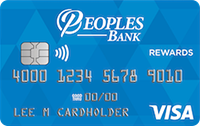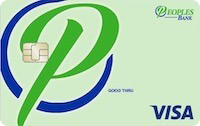Posted On: November 16, 2018 by Peoples Bank in: Business Financial Education Retirement

Saving for retirement is an important part of life. How much you save during your working years can dictate how comfortably you live in your older years.
And saving early is important. It can be the difference between hundreds of thousands or even millions of dollars. For example, if you put away $5,000 annually at an average growth rate of about 8 percent, you could be a millionaire in 40 years ($1.4 million). If you wait 10 years and only have 30 years on that growth, you’d only have $611,729 — less than half.
But knowing the ins and outs of retirement can be difficult. Most know the terms 401(k) and individual retirement account (IRA), but what exactly to do they mean? And what’s the best option for you personally or if you’re running a business? We talked to Mark Parker, a certified financial planner with LPL Financial, about breaking down each type of plan and finding what works best for you.
401(k)
401(k) retirement plans are typically offered by larger, corporate employers. Companies offer these plans as a benefit to help recruit and retain employees. Oftentimes, the employer will also match an employee’s contribution up to a percentage — essentially giving free money toward retirement.
Another advantage for 401(k) retirement plans is the pretax payroll deduction. If an employee opts into a plan, employers will simply pull the money from an employee’s paycheck before income tax is withheld. The downside is the tax is applied when funds are pulled out during retirement.
There are annual contribution limits for 401(k) plans, but they’re much higher than those for an IRA. In 2019, the 401(k) contribution limit will increase to $19,000. If you’re older than 50, there is a catch-up limit, which is an additional $6,000 per year.
The penalties for pulling money out of 401(k) retirement plans early are costly, though. Withdrawing before age 59½ will lead to a 10 percent penalty in addition to the tax on those funds.
IRA
Unlike a 401(k) retirement plan, IRAs are both for individuals and small businesses. IRAs are individual funds for people to earmark money toward retirement savings. They can be put in a variety of money-growing accounts, like certificates of deposit, money market accounts or mutual funds.
There are four different types of IRAs: traditional, Roth, Savings Incentive Match Plan for Employees (SIMPLE) and Simplified Employee Pension (SEP). Traditional and Roth IRAs are intended for individual taxpayers, while SIMPLE and SEP accounts are for small-business owners or self-employed individuals.
The difference between a traditional IRA and a Roth IRA is the tax implication. Traditional IRA contributions are tax-deductible, meaning they can be claimed as a deduction on income tax returns. But when you’re ready to take out that money during retirement, the funds will be taxed as income.
Roth IRAs are not tax-deductible, meaning contributions come from after-tax dollars. The advantage is that the money is tax-free when pulled out during retirement. In 2019, the annual contribution limit for both Roth and traditional IRAs will be $6,000 and an additional $1,000 for those at least 50 years old.
SEP IRAs are typically offered for self-employed individuals, like independent contractors, freelancers and small-business owners. They offer the same tax rules as traditional IRAs, but contribution limits are larger: 25 percent of compensation or $55,000, whichever is less.
SIMPLE IRAs, created for small-business owners, follow the same tax rules as traditional IRAs. But in these funds, employers and employees both make contributions. The employee contribution limit for a SIMPLE IRA is $13,000 annually and an additional $3,000 for those over 50 years old.
Like the 401(k), there are penalties for pulling out IRA funds before age 59½, so be aware of these before making decisions.
Personal choice
It’s not easy to decide where to put your hard-earned money, but here are a few guidelines. If you don’t own a business and work full time, your decision should depend on a few factors: your age, your tax bracket and whether your employer offers a match in a 401(k) plan.
An employer match is always worth taking, so if the threshold is a 3 percent contribution, for example, take the match. But that doesn’t mean you have to put all of your money into the 401(k). For younger employees, a Roth IRA may give more tax advantages at a later age.
Typically, young people in the workforce will see their earnings grow over time. Since Roth IRA contributions are already taxed, young people can stash away the money in a lower tax bracket. When they retire — most likely in a higher tax bracket — the Roth IRA money will be tax-free, which can be a huge tax advantage.
Of course, nothing can beat the ease of 401(k) contributions, which are pulled automatically from your paychecks. But if you are interested in an IRA, talk to the experts at Peoples Bank or go to our webpage at mypeoples.bank/personal/cds-iras.
For your business
Creating the right retirement plans for your company can help recruit and retain skilled and knowledgeable employees. But on the other side, business owners want a plan that gives the most benefit to revenues as well.
Parker, who has years of experience setting up retirement plans for both self-employed individuals and larger companies, has a few rules when it comes to deciding what plan to offer business owners and their employees.
For small businesses with fewer than 20 employees, Parker recommends a SEP or SIMPLE IRA plan, which is cheaper to administer and can give tax advantages.
“It’s just for smaller businesses with a smaller number of employees,” he said. “Because if you’re going to go that route of a 401(k), it’s usually larger companies and you’re going to have to be willing to pay for that administration.”
Parker recommends 401(k)s for businesses with 20 or more employees or for a small operation — with one or two employees — that makes a lot of revenue. He also said there isn’t a one-size-fits-all approach. He typically likes to take clients’ situations case by case.
For more information on what Peoples Bank can do for your personal or business retirement planning, contact Parker (mark.parker@LPL.com or 515-386-5457) or reach out to your local branch.




